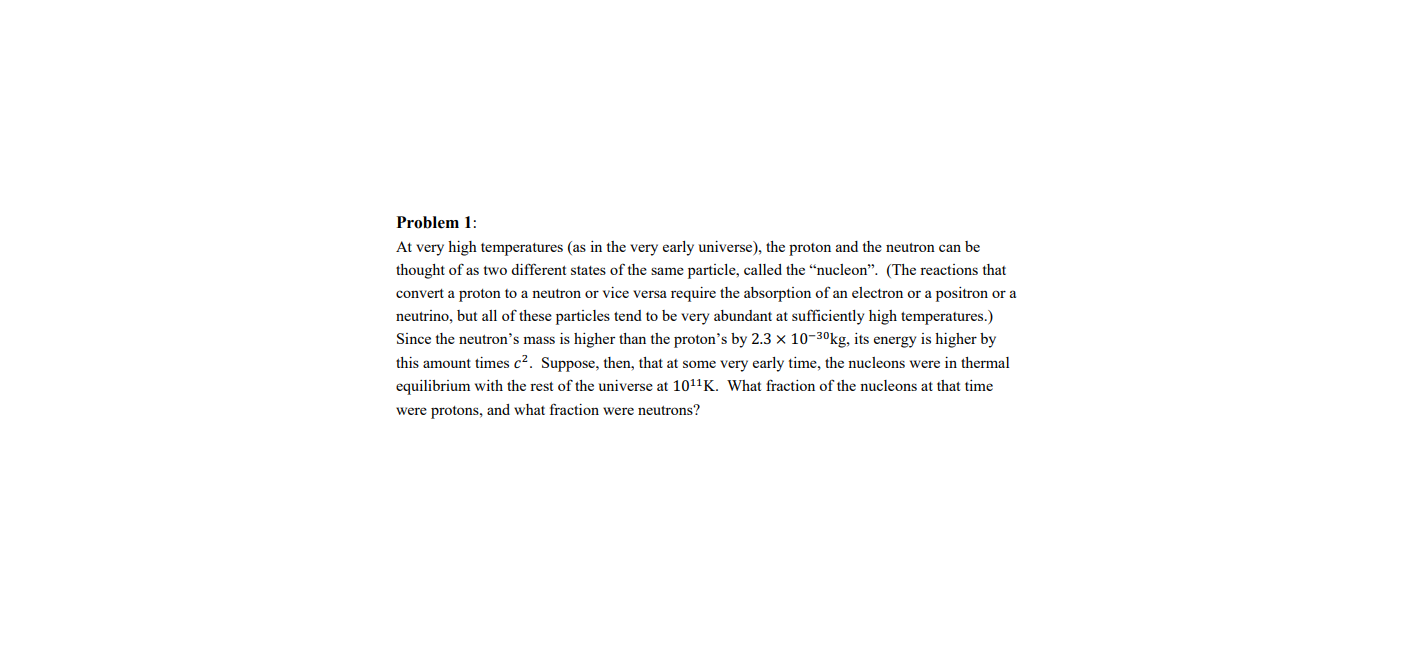Problem 1: At very high temperatures (as in the very early universe), the proton and the neutron can be thought of as two different states of the same particle, called the “nucleon". (The reactions that convert a proton to a neutron or vice versa require the absorption of an electron or a positron or a neutrino, but all of these particles tend to be very abundant at sufficiently high temperatures.) Since the neutron's mass is higher than the proton's by 2.3 x 10-30kg, its energy is higher by this amount times c2. Suppose, then, that at some very early time, the nucleons were in thermal equilibrium with the rest of the universe at 1011K. What fraction of the nucleons at that time were protons, and what fraction were neutrons?
Problem 1: At very high temperatures (as in the very early universe), the proton and the neutron can be thought of as two different states of the same particle, called the “nucleon". (The reactions that convert a proton to a neutron or vice versa require the absorption of an electron or a positron or a neutrino, but all of these particles tend to be very abundant at sufficiently high temperatures.) Since the neutron's mass is higher than the proton's by 2.3 x 10-30kg, its energy is higher by this amount times c2. Suppose, then, that at some very early time, the nucleons were in thermal equilibrium with the rest of the universe at 1011K. What fraction of the nucleons at that time were protons, and what fraction were neutrons?
Related questions
Question

Transcribed Image Text:Problem 1:
At very high temperatures (as in the very early universe), the proton and the neutron can be
thought of as two different states of the same particle, called the “nucleon". (The reactions that
convert a proton to a neutron or vice versa require the absorption of an electron or a positron or a
neutrino, but all of these particles tend to be very abundant at sufficiently high temperatures.)
Since the neutron's mass is higher than the proton's by 2.3 x 10-30kg, its energy is higher by
this amount times c2. Suppose, then, that at some very early time, the nucleons were in thermal
equilibrium with the rest of the universe at 1011K. What fraction of the nucleons at that time
were protons, and what fraction were neutrons?
Expert Solution
This question has been solved!
Explore an expertly crafted, step-by-step solution for a thorough understanding of key concepts.
This is a popular solution!
Trending now
This is a popular solution!
Step by step
Solved in 2 steps with 4 images
